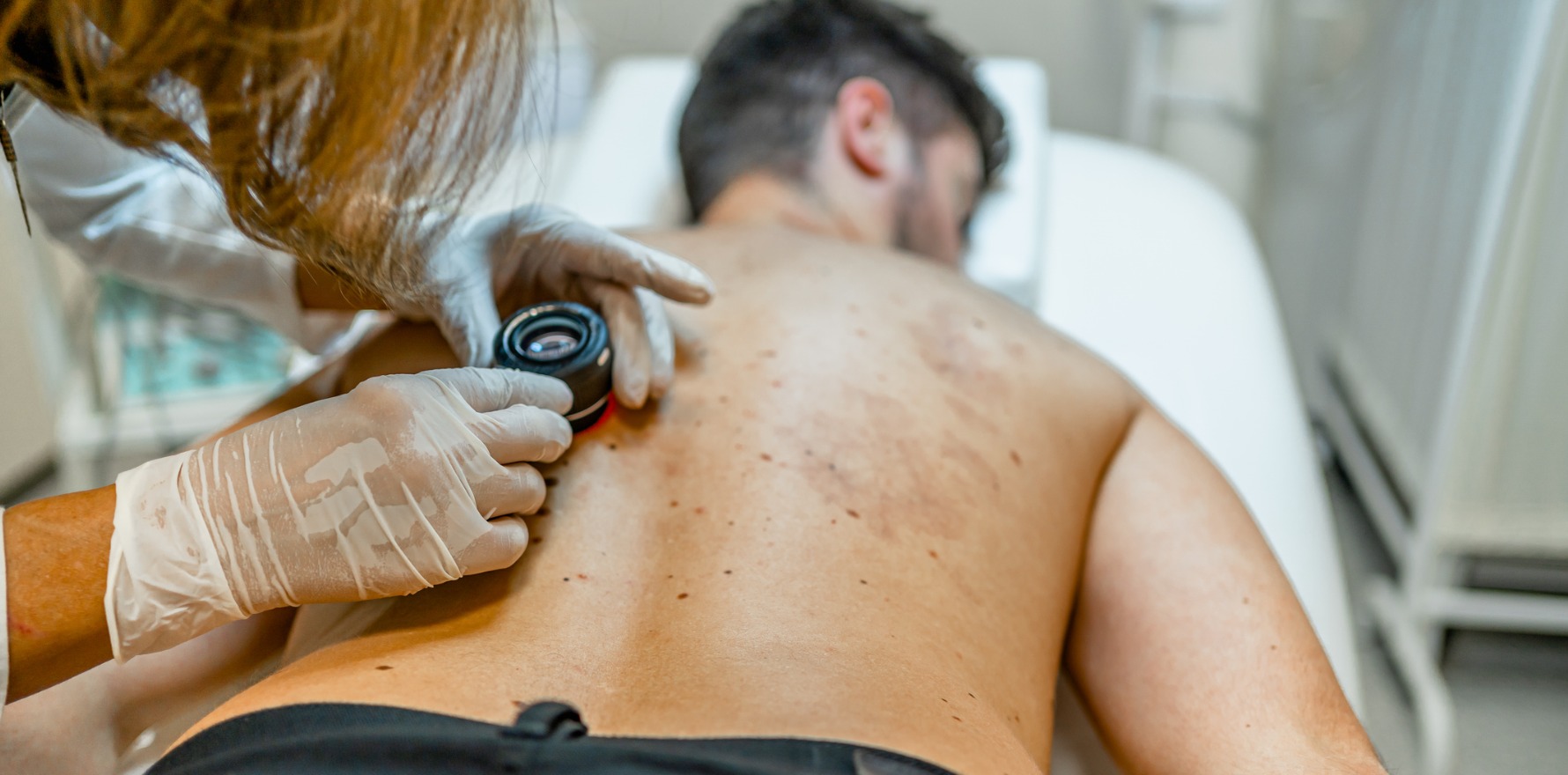But leading Australian melanoma researchers say moving to evidence-based skin checks will be a challenge.
A group of Australia’s leading melanoma researchers have doubled down on their push for a national targeted melanoma screening program in a perspective in this month’s Medical Journal of Australia.
Lead author Associate Professor Linda Martin, a dermatologist, paediatric dermatologist and researcher with the Melanoma Institute Australia, said more focus needed to be on prevention and less emphasis on encouraging skin checks for all, regardless of melanoma risk.
“Not everyone needs a skin check,” she told Oncology Republic.
“There are a lot of things that need to change to make skin checks evidence based. Some of these include more specialty training places, more dermatology education in medical schools, more education in primary care and community education.
“We also need more focus on primary prevention.”
The MJA perspective was co-authored by the MIA’s co-medical directors and joint Australians of the Year, Professors Georgina Long AO and Richard Scolyer AO; Professor Anne Cust, a cancer epidemiologist and NHMRC Investigator Fellow who is also the interim director of the Daffodil Centre, where she also leads the Melanoma and Skin Cancer stream; and dermatologist Professor Pascale Guitera, director of the Sydney Melanoma Diagnostic Centre at Royal Prince Alfred Hospital and the MIA’s Dermatology Department, as well as a senior researcher at the University of Sydney.
“Skin cancer is Australia’s most expensive cancer, with direct costs to the health care system of almost $2 billion per year,” they write.
“The additional cost of skin checks that do not result in a diagnosis of skin cancer is difficult to accurately quantify, as there is no Medicare item or process to collect these data.
“Current reimbursement models reward high patient volume and high biopsy rates, and community fear of cancer and clinician fear of error can also drive over‐servicing.
“The potential non‐financial costs of skin checks include patient anxiety, overdiagnosis and surgical burden. Increasing government spending on skin checks and skin cancer treatments may also exacerbate missed opportunities to focus on primary prevention, which is highly cost‐effective.
“There are geographical and socio‐economic inequities in who accesses skin checks, is diagnosed with melanoma, and dies from it, and there is a large variation in the number of surgical procedures per malignant diagnosis by clinical setting and subspecialty.
Skin checks in their current form are largely without clear guidelines or quality frameworks. For these reasons, key stakeholders representing consumers, researchers, clinicians and policy makers are supportive of an organised risk‐tailored melanoma screening program.”
The authors conceded that the clinical diagnosis of melanoma and other skin cancers was challenging. However, it was estimated that up to half of melanoma in situ diagnoses and 15% of invasive melanomas were overdiagnosed and, if left undetected, would not have caused morbidity or mortality within a person’s lifetime.
“Thus, consideration of who to screen, and detection and management of low-risk skin cancers or their precursors, need careful consideration,” they write.
Related
The authors reiterated Professor Martin’s comment that “not all Australians need regular skin checks”.
They said targeting early detection efforts to individuals at high risk of developing melanoma could increase benefits and reduce the potential harms of screening.
There were already several online validated melanoma risk prediction tools available for the Australian population that facilitated estimation of personal risk of melanoma diagnosis.
“Future developments in risk tools and their interface, such as incorporation of additional risk factors from skin images and medical record data, are expected to further improve accuracy,” the authors write.
“Individual risk assessment and education for all patients has been demonstrated to be acceptable and feasible in clinical care.
“Communicating the lifetime risk of melanoma and other skin cancers is important for primary prevention messaging; however, 10‐year absolute risk of melanoma would be more relevant for identification of individuals who may benefit from regular skin checks.
“The risk thresholds to determine screening eligibility and frequency could be based on modelling and achieving an optimal balance of benefits and harms, along with considerations of cost‐effectiveness and resource implications.”
While they anticipated “some reluctance for low-risk groups to not screen or de‐escalation of existing screening”, they said anxiety related to melanoma diagnosis was common and needed to be systematically identified and addressed with specific psychological interventions to reduce fear of cancer, rather than addressed with increased skin surveillance.
The authors said the quality of skin checks and health outcomes could be improved through the introduction of an organised screening program, by standardising the screening and diagnosis process, including the extent of examination, lesion selection, criteria for biopsy, and biopsy technique.
“The frequency of skin checks should be tailored to individual risk, while considering growth trajectories of melanoma subtypes,” they write.
“Cost‐effective screening intervals are yet to be determined, and modelling may provide guidance, but could vary from every three to six months for individuals at extremely high risk of developing melanoma to every five years or more for individuals at lower risk.”
The authors pointed out that about a third of Australian adults aged 45-69 years reported having a whole‐body skin check annually.
“This form of ad‐hoc screening is contrary to national and international recommendations, with both the Australian Government Standing Committee on Screening and United States Preventive Services Taskforce concluding insufficient information on the benefits and harms of skin cancer screening, and lack of data on cost‐effectiveness,” they write.
Australian clinical practice guidelines recommend “opportunistic screening”, either patient‐driven or clinician‐initiated skin checks occurring outside an organised program, for patients at increased risk of melanoma, and six‐ to 12‐monthly skin checks for anyone who has ever had a melanoma.
Professor Martin told OR screening programs had proven their value in areas like breast cancer, bowel cancer and the risk-based lung cancer screening program would start next year in Australia.
She pointed out that these screening programs had specific tests, while the current screening for melanoma was still based on a visual examination of the skin.
“At the end of the day it’s going to come down to a trial-based test and we are working on that,” she said.
In this year’s federal budget, the government pledged $10.3 million over four years from 2024-25 to the MIA to undertake targeted research into skin cancer screening and develop a roadmap for a national, targeted skin cancer screening program.




